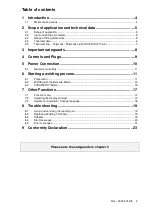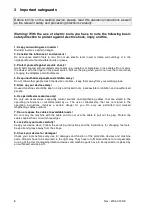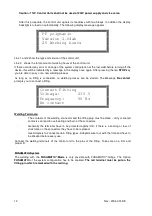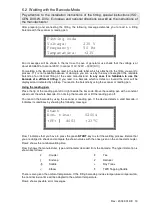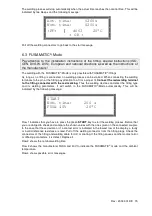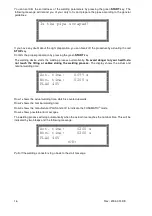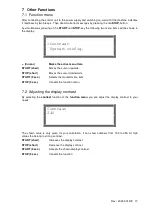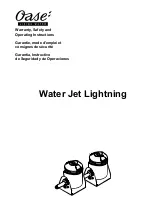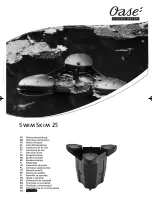
Rev.: 2004-001-DE
13
6.2 Welding with the Barcode-Mode
Pay attention to the installation instructions of the fitting, special instructions (ISO,
CEN, DVGW, DVS), European and national directions as well as the instructions of
the manufacturers!
After preparing and connecting the fitting, the following message demands you to read in a fitting
barcode with the scanner or reading pen:
Fitting code
Voltage:
230 V
Frequency: 50 Hz
Temperature: +23V
Error messages will be shown in the last row. In case of generator use check that the voltage is at
about 240-260V at nominal 230V (nominal 110V: 120V – 130V (AC)).
For welding in the Barcode-Mode, read in the barcode label, which is attached to the fitting you want to
process. If it is not readable because of damage, you can use by the way of exception the readable
barcode of an identical fitting of the same manufacturer.
In any case it is forbidden to use the
barcode of a different fitting.
If you read in a barcode which is defect or invalid the error will be
displayed and indicated by a bleep. You read in the barcode by using the scanner or reading pen.
Using the reading pen:
Place the tip of the reading pen left or right beside the bar code. Move the reading pen with a constant
speed over the whole barcode. Do not stop the movement or lift the reading pen off.
You read-in the barcode by using the scanner or reading pen. If the device detects a valid barcode, it
indicates its readiness by showing the following message:
Start
Nom. time:
0200s
+PF+
[
d063 +23°C
Row 1 indicates that you have to press the green
START
-key to start the welding process. Before that
you are obliged to check and compare the shown values with the ones given on the connected coupler.
Row 2 shows the nominal welding time.
Row 3 shows the manufacturer, type and diameter decoded from the barcode. The type information is
shown like follows:
I
Coupler
T
Tee
]
End cap
Y
Reducer
.†.
Saddle
>
Ray Trans
(
Elbow
ל
TWD Tapping Saddle
There is also given the ambient temperature. If the fitting barcode provides
temperature compensation
,
the nominal fusion time will be adapted to the ambient temperature.
Row 4 shows possible error messages.
Summary of Contents for Polymatic
Page 2: ...Rev 2004 001 DE 2...
Page 23: ...Rev 2004 001 DE 23 9 Conformity Declaration...
Page 24: ...Rev 2004 001 DE 24...



